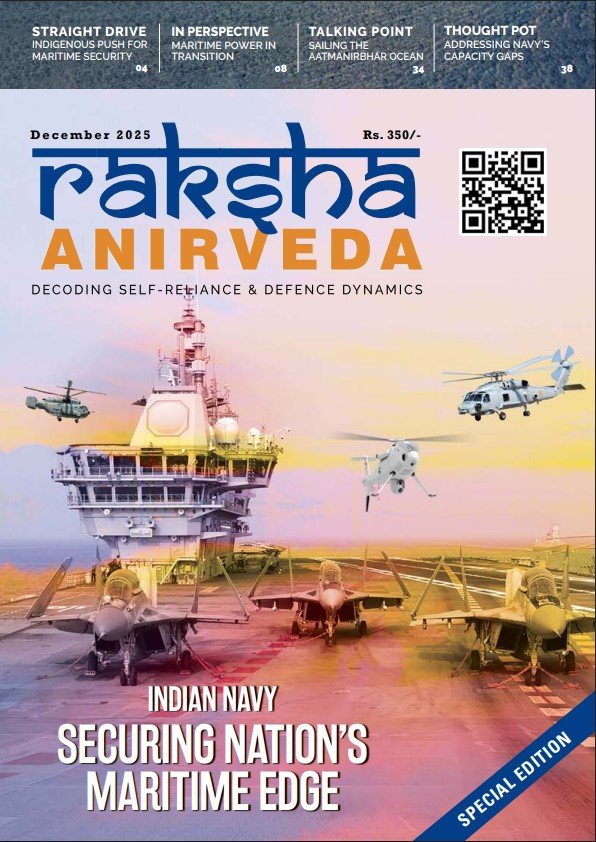Change is the explicit rule of human nature. Changes affect every aspect of human societies; change is an integral part of politics, particularly global politics. While the prospect of radical change in the strategic perceptions of two state actors may not take place quickly, what, however, happens is that the concerned actors reach a sort of understanding to pursue their shared interests by setting aside differences and work on improving bilateral ties.
This is precisely what is happening between India and China. China and India, two Asian and global behemoths are the second and fourth largest economies in the world and are in possession of some of the world’s strongest armed forces backed by formidable nuclear arsenals have had a hot-cold relationship since the 1950s.
The bilateral relationship nosedived when Indian and Chinese troops clashed along the LAC or Line of Actual Control in the Pangong Lake in eastern Ladakh in June 2020. The clash resulted in a number of troop casualties on both sides. The incident led to a precipitously decline in ties with New Delhi undertaking a slew of steps to protect its national interests and China retaliating in kind.
The foreign policy of a country is always framed behind closed doors with a group of experienced and competent officials. This is the normal procedure in most countries of the world. However, when it comes to Trumpian America, one has to expect the unexpected, the second Trump presidency has, in that context, upended decades of American foreign policy tradition by taking decisions on pressing global matters and important bilateral and multilateral relationships in a highly public manner
In addition to that, the situation along the border was tense with New Delhi and Beijing amassing 50,000-60,000 troops on both sides backed by artillery and other military assets. It seemed that India’s ties with China were back to the phase of the post 1962 period.
America’s Himalayan Blunder
While both the countries had started repairing their ties since the 2024 BRICS summit in Kazan, Russia; the propitious window of opportunity for the restructuration came when USA, which enjoyed a warm and strong relationship with India, committed a Himalayan blunder by deciding to revive American imperialism. Washington’s decision to impose 50% tariffs on India, 25% for failure to negotiate a trade deal that is favorable to Washington and 25% as penalty for buying crude oil from Moscow and directly financing the ‘Russian war machine’ in Ukraine represented this style.
The foreign policy of a country is always framed behind closed doors with a group of experienced and competent officials. This is the normal procedure in most countries of the world. However, when it comes to Trumpian America, one has to expect the unexpected, the second Trump presidency has, in that context, upended decades of American foreign policy tradition by taking decisions on pressing global matters and important bilateral and multilateral relationships in a highly public manner. This is a quintessential example of the complete mockery Trump and his American administration made of the long standing conventions of international politics.
Points of Concern Remain
Notwithstanding the ongoing thaw in ties with Beijing, there exist several key points of concern that hinders the full recovery and development of such an important relationship. The first problem is the asymmetric nature of the India-China trade relationship. With bilateral trade over $100 billion, China enjoys a gargantuan trade surplus over India. Apart from this, China hasn’t provided market access to Indian companies and government in the manner India has demands. Lack of transparency in market access creates an asymmetry in the economic aspect of the relationship.
Notwithstanding the ongoing thaw in ties with Beijing, there exist several key points of concern that hinders the full recovery and development of such an important relationship. It is, therefore, essential that the two behemoths can find ways of addressing these issues and claim the 21st century as the Asian century
The second issue is the unsettled nature of the LAC. History is witness to incidents where major disputes between nations flare up due to disputed nature of the borders with devastating consequences. With a 3,488 km border, resolution of pressing border issues, especially along the Arunachal Pradesh and Ladakh sectors are the need of the hour. A consensus on patrolling and demarcation of the contested areas must be reached, keeping in mind the mutual sensitivities of both sides. In this context, more power must be given to the special representatives appointed for this purpose. Further, more Confidence Building Measures (CBM) at the diplomatic and military levels must be formulated to ensure timely resolution of the outstanding territorial disputes. In that context, the de-escalation in the Ladakh sector must be done expeditiously as troops of both sides continue to be stationed, undermining the prospects of normalcy and restoration of normalcy in ties.
The third and one of the most critical issues is the Chinese support to Pakistan during military conflicts. Beijing has made no secret of its support to Pakistan on a whole host of issues, both covert and overt over a period of time. The active support that Beijing gave to Islamabad in the May 8-10 military confrontation in the aftermath of Operation Sindoor in terms of weapons, surveillance and intelligence should be a matter of extreme concern for India, especially when it is bounded by China in the north and north-east and Pakistan in the north-west. The government of India must take up this matter very strongly at the highest levels of the administration with their counterparts in Beijing and point out in unambiguous terms that while differences must not be allowed to become disputes, providing support to a country that actively uses terrorism as an instrument of statecraft is something that can play the spoiler in the Sino-Indian relationship.
It is, therefore, essential that the two behemoths can find ways of addressing these issues and claim the 21st century as the Asian century.
–The writer is currently working as a Research Associate at Defence Research and Studies (dras.in) and is a columnist. The views expressed are personal and do not necessarily reflect the views of Raksha Anirveda






